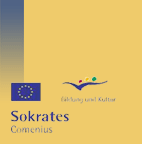Integration of technical education in primary education
5. In the curriculum: how to present TE
As stated earlier, research
points out that short running projects are hardly influencing the attitude
towards technology (Boser, Palmer en Daugherty, 1998). However, the PATT
studies show that when a school is offering technical education during
successive years the attitude of children is changing in a positive way.
This is a plea to develop a
full learning line for all grades or to explain for each year how a product can
be embedded in a part of the curriculum of a course year.
We also explained earlier
that along the ideas of development-oriented education children must be invited
to the zone of the proximate development. This means that education has to
offer open learning situations in which it is clear to which phase of
development the activity belongs and what the next activities can be. One could
say that it is the filling in of the hidden agenda constructed by each teacher
on the principle that children are observed.
a. alternative ways of
presenting
Several ways of presenting technical
education are described in an article of Boser, Palmer en Daugherty, 1998
(students Attitudes toward technology in selected technology education
programs):
- industrial art approach
- integrated approach
- modular approach
- problem solving approach
It looks like there are no
big differences in the results of these ways of presentation.
This list can be completed
by:
- projects
- technology as a part of a
theme
- technology as a part of a
methodology
- an experimental landscape
(see earlier in chapter 1)
b. The relation with other
subjects
One of the concerns is the
cohesion of the presented learning activities. A cohesive presentation makes it
easier to remember and reflects much more reality, which is neither consisting
of separate subjects. Beside that: for children an activity becomes meaningful
when it is useful, useful for
the things with which children are busy. An excellent example is what a teacher
said with a class with a majority of ethnic minority children (having two
student teachers technical education in her classroom):
Great, to see them at work
like this. I would like to give such lessons more often, but
I need all my
time for teaching them Dutch. At the same time one of these second language
learners is full of enthusiasm explaining to the visiting director how the
machine works to get a cow across the water
..
Integration of subjects does
not mean that the subjects are not recognizable any more.
Sometimes an attempt is made
to explain how technology can be linked to which lesson method or to what
lesson technical education can be best linked. The background idea is to have a
cohesive offer. People are very much afraid of giving the impression that
technical education is again a new subject which has to be introduced.
Because of the reality that
sometimes it is difficult indeed to link technical education to other subjects,
it is a matter of giving enough support to teachers and to give them
suggestions, which leaves that seeing and experiencing things is the most
convincing.
A final alternative is to
focus on a technical activity and to link that to other subjects. It is the
other way around.
c. links to the daily
education practice
For many teachers there are obstacles:
they fear the unknown, not only because of knowledge and skills, but also
related to organisation and teaching methods. Staying close to what a teacher
is accustomed to in relation to teaching methods enhances the chance that s/he
is putting technical education into practice. E.g., when working in corners for
young children is already daily practice, this practice can be used to add
technical supplies or to design a technic corner.











